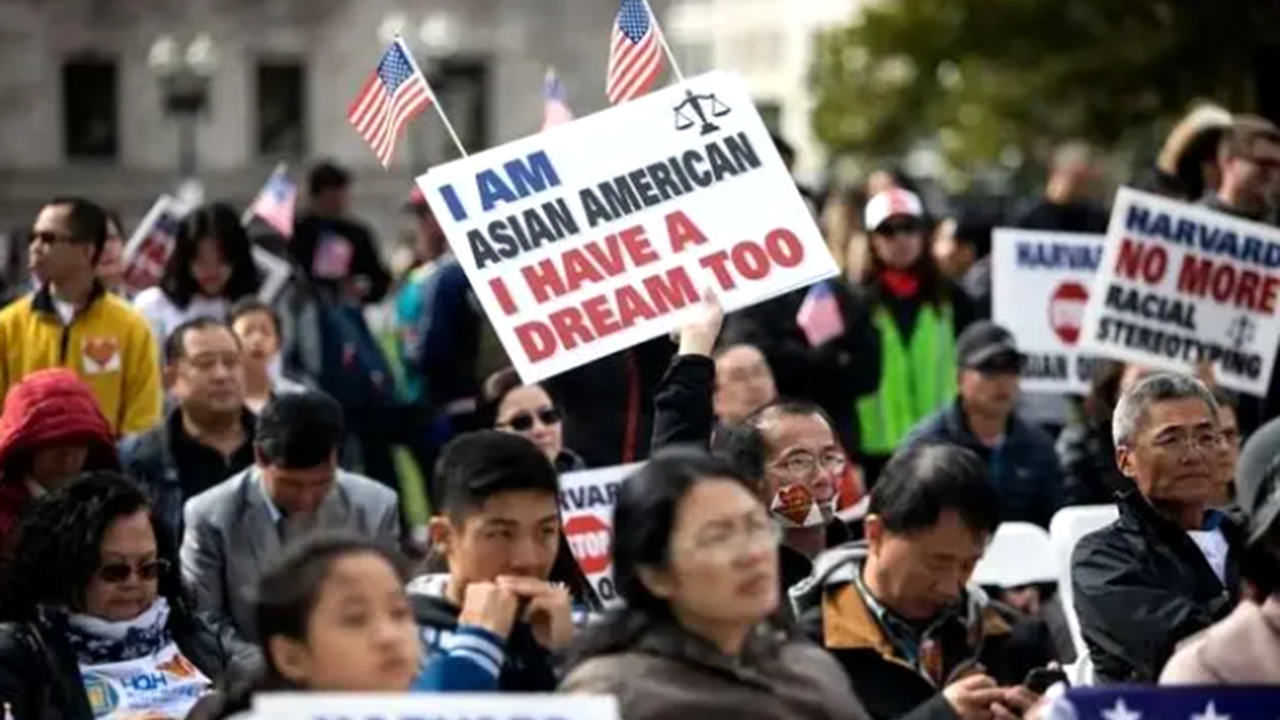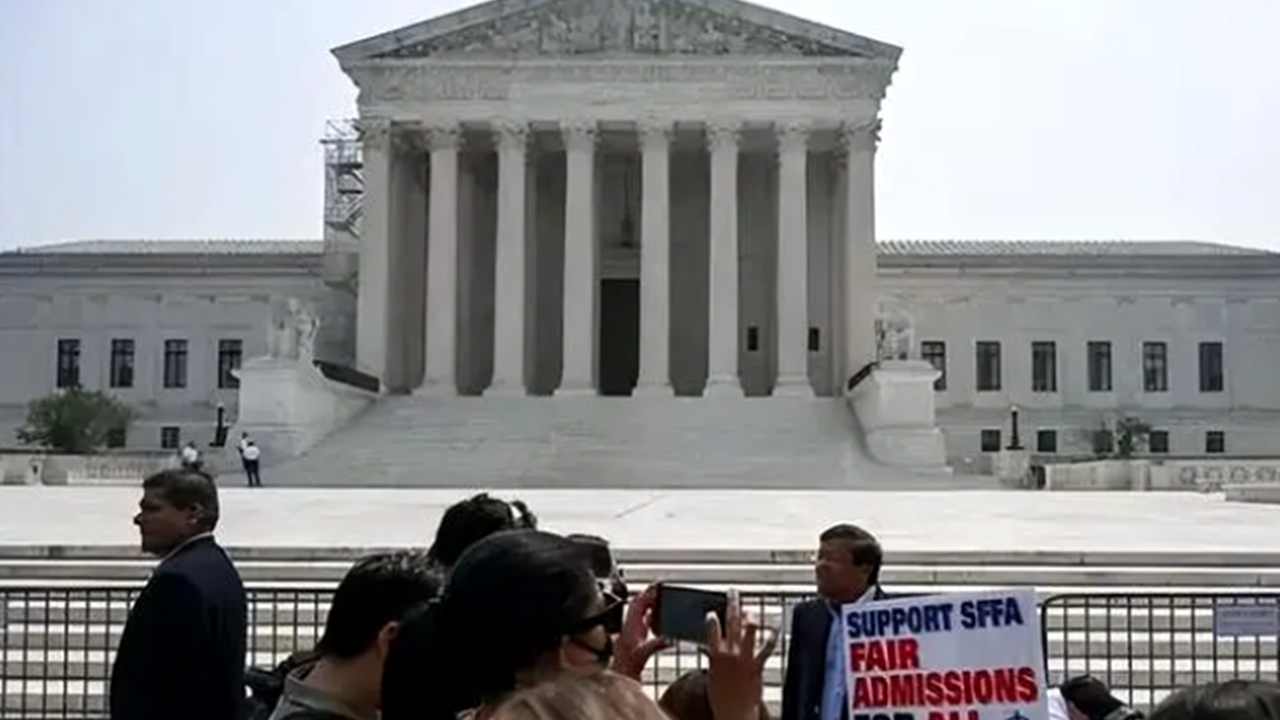US college admissions drops affirmative action, finally
Writer: Liu Jianwei | Editor: Zhang Chanwen | From: Shenzhen Daily | Updated: 2023-07-03
On June 29, a significant ruling by the Supreme Court of the United States brought an end to affirmative action, rendering it illegal for colleges to consider race as a specific factor in their admission process.

Asian Americans take to the street to call for the dropping of affirmative action in U.S. college admissions.
SD-Agencies
This landmark decision overturns long-established precedents and was prompted by litigation against Harvard University and the University of North Carolina, highlighting the unfair practice in their admissions. Affirmative action programs have been used in certain colleges and universities as a means to promote racial equality in the U.S. Since its inception in the 1930s, affirmative action has been associated with policies aimed at increasing the enrollment of African American students and other underrepresented minorities in higher education. However, Chief Justice John Roberts, in the majority opinion, argues that “race-conscious admissions have negative consequences, because in boosting some groups, other groups suffer.” He further emphasizes that such admissions perpetuate stereotyping.
College admissions shall be based on the merits of applicants, without consideration of their race. Institutions of higher learning are expected to serve as models for providing fair opportunities in society.

Protesters outside the U.S. Supreme Court. SD-Agencies
In his iconic speech, Dr. Martin Luther King Jr. eloquently expressed his desire for a future where individuals would be judged based on their character rather than the color of their skin. The recent Supreme Court ruling aligns with the aspiration of that dream, a dream that resonates with many Americans. Prevailing over the preferential treatment of applicants based on race, this ruling is a significant step towards eliminating discrimination within the admissions process.
Prior to this Supreme Court decision, several states had already taken actions to address affirmative action. For instance, California implemented Proposition 209 in 1996, which effectively banned the use of race, sex, or ethnicity as factors in public institution admissions through an amendment to the state constitution. Similarly, Michigan discontinued affirmative action in college enrollment practices in 2006.
The disapproving sentiment is not limited to conservative individuals, but is also shared by many liberal-minded people who frequent The New York Times website. On that site, a poll on the affirmative action indicates that 69% to 74% of the respondents believe colleges and universities should not use race as a factor in admissions.
The opposition to affirmative action is not a politically polarized issue, as The New York Times reports that 7 in 10 Americans are against it. The Supreme Court’s decision is regarded by many as long overdue.
When Bill Russel, the lord of basketball championship rings, died in 1922, the National Basketball Association (NBA) honored his legacy by naming the Finals Most Valued Player trophy after him and all 30 NBA teams hanged up his jersey number. Back in the days when Russel started playing, players in the game were predominantly white; while in 2022, approximately 71.8% of all NBA players were African American.
African American players take over the basketball court with their skills and competence, not through any racially favored system. Fair competition within an impartial environment allows players with merit to succeed and be rewarded with generous compensation.
It would be ludicrous if the NBA were to introduce some sort of affirmative action to bring in more players from other ethnical origins.
Fair play should be applied to other grounds in play too, including college admissions and employment opportunities.
Diversity, as advocated by some colleges and companies, is sometimes just another form of racism in pretense.
Providing equal opportunities in society should be a far-reaching endeavor and a collective effort by all members of the society.
(The author is an independent financial investor.)